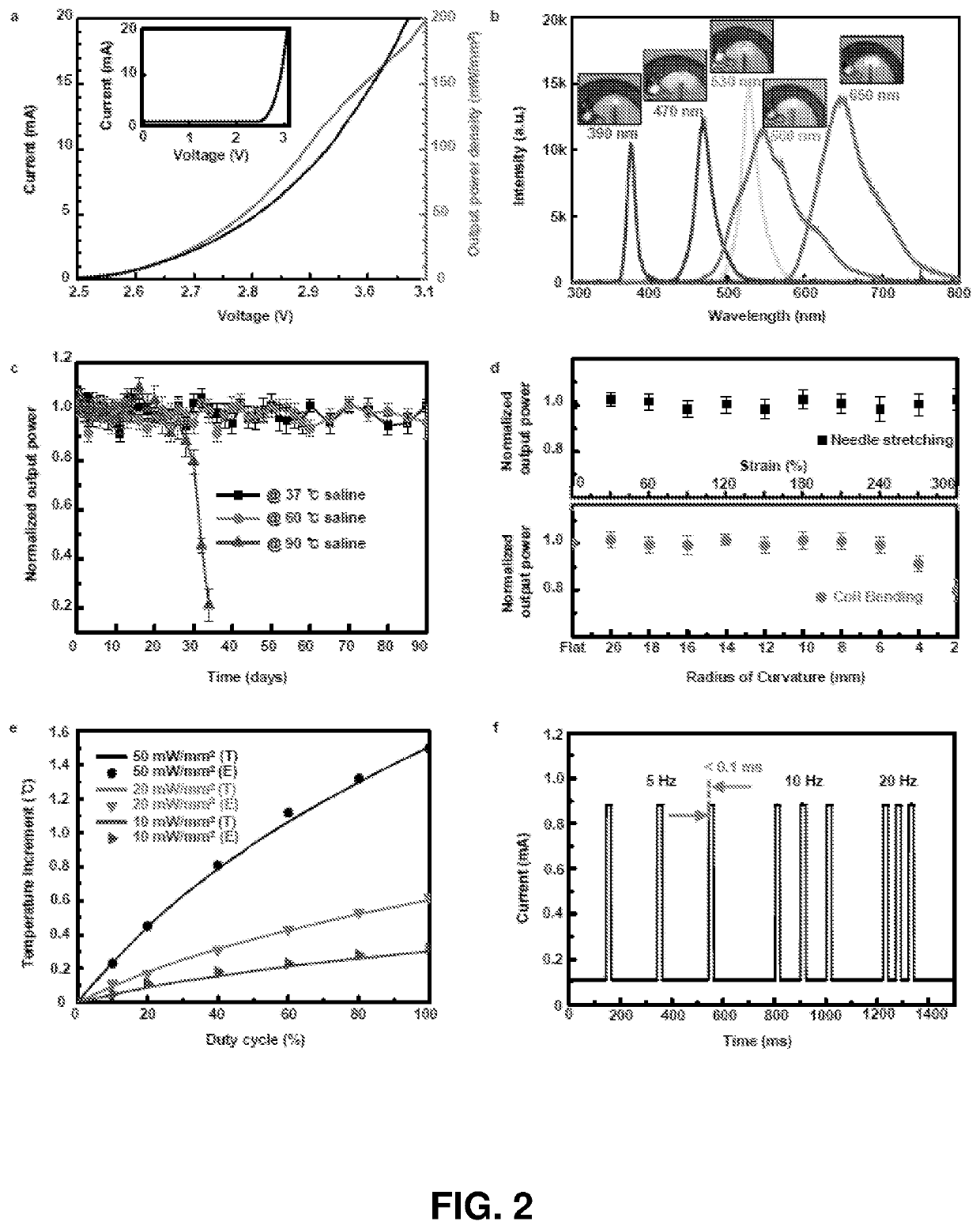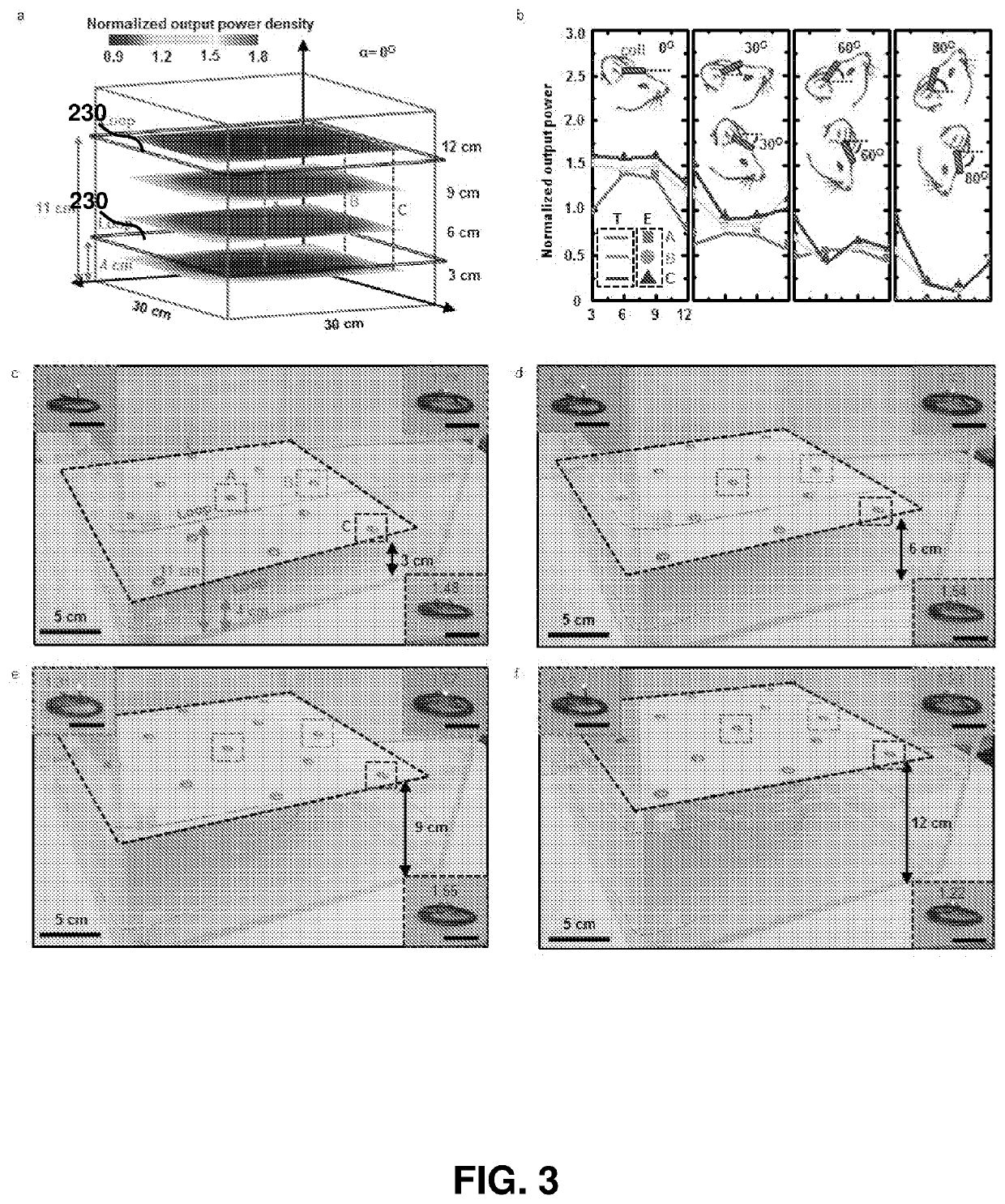Implantable medical devices for optogenetics
a technology of optogenetics and medical devices, applied in the field of optogenetics, can solve problems such as heightened risk of adverse events, and achieve the effect of precise monitoring and control of biologic function
- Summary
- Abstract
- Description
- Claims
- Application Information
AI Technical Summary
Benefits of technology
Problems solved by technology
Method used
Image
Examples
example 1
t, Fully Implantable Optoelectronics Technology with Near-Field Wireless Operation for Broad Application in Optogenetics
[0226]Abstract
[0227]Optogenetics, which enables light-induced, area-confined stimulation or inhibition of genetically targeted neurons, is now an essential tool for modern research in neuroscience. Implantable optoelectronic technologies offer the most powerful and versatile capabilities in optogenetics experiments, but their specialized designs are not easily adapted to the type of mass manufacturing approaches that are needed for distribution to the broader community. Furthermore, the associated radio frequency schemes for power delivery and control depend sensitively on details associated with the sizes, shapes and positions of metallic components and / or water features in and around the experimental environment. In this example, we present a fully implantable device platform compatible with near field communication hardware, similar to that used for RFID tags an...
example 2
e and Implantable Photometry Devices
[0268]This example relates to the development of a robust, minimally invasive wireless photometry system for in vivo calcium measurements in freely moving behavior. To achieve this, a miniaturized, wireless, ‘injectable’ photometry platform (˜300 mm wide, ˜100 mm thick and several mm long) that enables quantitative measurements of fluorescence stimulated using a high performance microscale inorganic light emitting diode (μ-ILED) and captured using a co-located, sensitive microscale inorganic photodetector (μ-IPD) is described. These devices directly address current limitations in measuring calcium transient activity within any environment and facilitate sensing of genetically defined neural networks in more ethologically relevant behaviors. These small-scale device components will mount on thin, flexible filaments with overall dimensions significantly smaller than fiber optic cables. The resulting systems will greatly reduce motion artifacts, due ...
example 3
aracterization
[0311]FIGS. 32-55 further illustrate the biocompatibility of the devices and in vivo operation. For example, FIG. 32 illustrates a wireless photometry system for deep brain Ca2+ measurement. Panel (a) is a schemetic exploded-view illustration of a wireless, injectable, ultrathin photometry probe with a μ-ILED and a μ-IPD at the tip end. (b) Optical micrograph of the injectable photometry probe. The tip has a total width of ˜350 μm and a thickness of ˜150 μm. The weight is 29 mg. (Inset) Magnified colorized SEM image of the tip (orange: polyimide; yellow: interconnection; blue: μ-ILED; green: μ-IPD with an optical filter). Scale bar, 200 μm. (c) Schematic illustration of a GaAs μ-IPD. (Bottom) SEM image of a representative μ-IPD (lateral dimensions of 100×100 mm2, and thickness of 5 μm). Metal electrodes are colorized in yellow. Scale bar, 50 μm. (d) Schemetic exploded-view illustration of a transponder. (e) Photographic image of the wireless detachable transponder on f...
PUM
 Login to View More
Login to View More Abstract
Description
Claims
Application Information
 Login to View More
Login to View More - R&D
- Intellectual Property
- Life Sciences
- Materials
- Tech Scout
- Unparalleled Data Quality
- Higher Quality Content
- 60% Fewer Hallucinations
Browse by: Latest US Patents, China's latest patents, Technical Efficacy Thesaurus, Application Domain, Technology Topic, Popular Technical Reports.
© 2025 PatSnap. All rights reserved.Legal|Privacy policy|Modern Slavery Act Transparency Statement|Sitemap|About US| Contact US: help@patsnap.com



